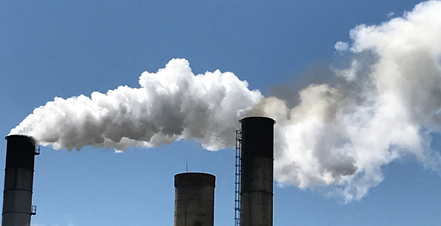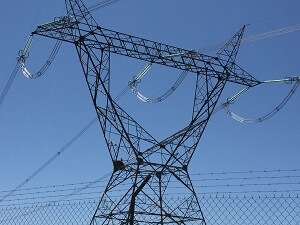Progressive Climate policy is the Soul of Advanced Australia

When we know that something was done poorly in the past, our conscious coax us to find a new and progressive way of living-learning from our mistakes, or shall we say experiences. And then there are situations, which are linked with awareness and knowledge. As an example, until the vehicle emission standards for new vehicles were introduced in Australia in the early 1970s, it was ok to drive vehicles at the cost of human health and environment. However, once the standards were put in place everyone accepted the new standards that eventually proved to be good for human health and the environment. If you ask your heart, it will quietly but very convincingly tell you that a progressive tightening of the vehicle emission standards in Australia for the last 40 years was indeed a good thing to do.
As individuals, we all want advancement, be it in our thinking or in our actions to keep pace with the dynamic environment where change is the only constant – the changing season that we enjoy, the non-stop spinning of earth or the ever-expanding universe we live in. However, the Australian Climate Change policy hasn’t advanced much in the last decade (see table below). Now, climate change policy is once again at the center of the debate.
Timeline of Australia’s key climate change policies
| Milestones | Events |
| March 1994 | Australia ratified United Nations Framework Convention on Climate Change (UNFCCC) |
| April 1998 | Australia signed but didn’t ratify the Kyoto protocol |
| December 2007 | Prime Minister Kevin Rudd from Labor Party ratified the Kyoto Protocol |
| December 2008 | Labor Government proposed Carbon Pollution Reduction Scheme (CPRS) – a cap-and-trade scheme to limit Australia’s GHG emissions. |
| August 2009 | CPRS legislation voted down in the Senate for the first time. |
| December 2009 | Tony Abbott replaced Malcolm Turnbull (who urged its party’s Member of Parliaments to support the revised CPRS) as leader of the opposition party and withdrew its party’s support for the CPRS. The CPRS voted down in Parliament for a second time. |
| April 2010 | Prime Minister Kevin Rudd put CPRS on hold until 2013 |
| June 2010 | Julia Gillard replaced Kevin Rudd as Prime Minister |
| February 2011 | Prime Minister Julia Gillard unveiled Clean Energy Future Package; central to this package was Carbon Pricing Mechanism (CPM), commonly referred to as “Carbon Tax” |
| November 2011 | The Australian Senate passed Carbon Pricing Mechanism (CPM) |
| July 2012 | Carbon Pricing Mechanism (CPM) came into effect |
| Nov/Dec 2012 | Australia signed the second commitment period of the Kyoto Protocol. |
| July 2013 | Prime Minister Kevin Rudd (replacing Julia Gillard) announced to terminate the Carbon Tax and move to an emissions trading scheme (ETS) commencing from July 2014 |
| November 2013 | Prime Minister Tony Abbott (replacing Kevin Rudd) introduced legislation to repeal the Carbon Pricing Mechanism (CPM). The bill to repeal the CPM passed the Lower House of the Parliament. |
| March 2014 | CPM repeal defeated in the Australian Senate. Australian Labor Party and the Australian Greens Party combined to vote against the CPM repeal laws in the Australian Senate |
| July 2014 | Australian Senate once again rejected legislation to scrap the CPM |
| 17 July 2014 | Australian Senate repealed the CPM |
| October 2014 | Australian Senate passed legislation to implement the Emissions Reduction Fund (ERF) |
| 13 Dec 2014 | Legislation to implement the Emissions Reduction Fund came into effect |
| 12 December 2015 | Paris Agreement was adopted through consensus by 196 countries. Australia’s Paris target – To reduce emissions to 26-28 percent of 2005 levels by 2030. |
| 1 July 2016 | Safeguard Mechanism came under effect (but was not as effective as anticipated). The aim of the safeguard mechanism is to ensure that the emission reductions achieved by ERF were not displaced by a rise in emissions above business-as-usual levels elsewhere in the economy. |
| 19 July 2016 | Liberal-National Coalition won the federal election; Liberal Party leader Malcolm Turnbull sworn in as a Prime Minister of Australia, ERF was maintained without any new funding. |
| November 2016 | Paris Agreement came into effect |
| 2018 | National Energy Guarantee (NEG) was proposed, discussed and Coalition Party room approved the scheme on 14 August 2018 but never legislated the scheme. If legislated, NEG would have obliged energy suppliers and retailers to guarantee a minimum amount of power at an average emissions level consistent with Australia’s commitments under the Paris agreement. |
24 August 2018 | Scott Morrison was sworn in as Prime Minister of Australia after being elected leader of the Liberal Party. |
| May 2019 | Australian Federal Election 2019 None of us has the crystal ball to predict what is going to be Australia’s next climate change policy although the political parties have flagged several policy options. |
Development towards a better society and a better future has always been an utmost priority for Australia. In other words, progress is the soul of Australia, which has enabled the country to navigate its journey from “Australia” to “Advanced Australia”. Unfortunately, in the climate front, the country hasn’t been able to progress further and deliver its citizens a firm climate policy yet.
In the last decade, as a climate and carbon market professional, I have witnessed many small and medium size Australian companies providing services in the climate and carbon market domain going out of business or drastically downsizing. Many international companies opened up their offices in different Australian cities in pursuit of new opportunities but soon after closed down their offices due to policy uncertainties. Had the climate policy environment been strong, these professionals would have contributed to Australian Exchequer by offering services globally leveraging Australian experiences in climate and carbon market domain. The best time to implement and embrace a progressive climate policy for Australia was ten years ago and the second best time is now.
If we look back, the Australian climate change policy account hasn’t been a straight line to date; it is full of troughs and ridges. However, the trend line could be more progressive if individuals can stand for that desired future. In Barack Obama’s words, the most important office in the world is not the Prime Minister or the President; the most important title is the “citizen”. My question to you is – Are we prepared to use our “most important title” in the upcoming 2019 Australian Federal election to carve a future that we want for our children, our planet, and us?
About the Author:
Anil Bhatta is the managing director of Melbourne-based Carbon & Clean Energy Solutions (CCES), which provides services for the clean energy and carbon markets. Mr. Bhatta has written international papers on climate policy, carbon markets and clean technology. He can be reached at anil@c-ces.com
Disclaimer: All the content in this article is completely original; it has not been inspired by, nor is it based on any other article, nor any book, and therefore the Author regrets any resemblance with any of the aforementioned, and would like to assure that it was unintentional. Moreover, the author do not intend to be offensive towards anyone who reads this article, if anything written can be perceived as hurtful to any community or person, the author apologizes, however, that was not the purpose of the writing.




